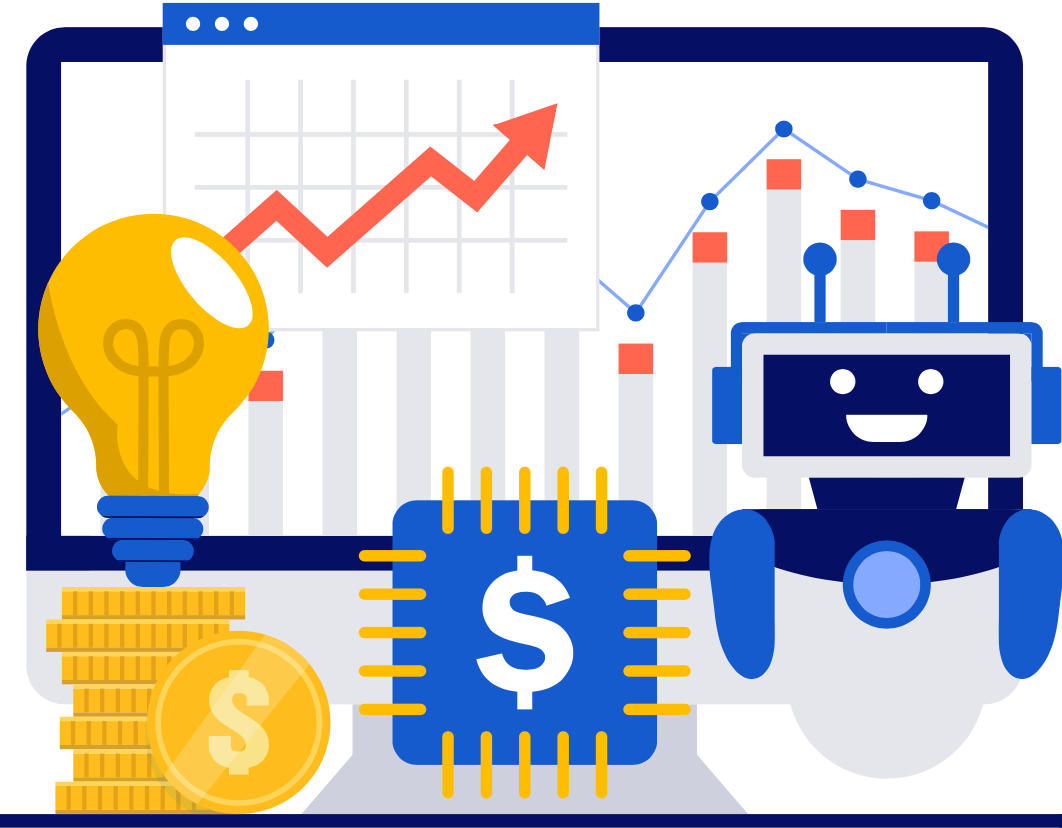Menu
- About Us
- Services
- Industries
- Resources
- Careers
- Contact

A new generation of accounting and finance professionals are taking advantage of robotic process automation (RPA), which is changing the industry faster than any other technology. There is a growing need for automation, but many professionals do not know where to begin. In fact, many professionals ask, "What is RPA?" A robotic process automation (RPA) system automates certain types of human tasks with software.
RPA software automates mundane, repetitive, rule-based processes, allowing accounting staff to devote more time to serving clients and other more valuable tasks. Using RPA in accounting and finance is similar to using Excel macros. While macros are limited to Excel, RPA solutions can run across a wide range of accounting and financial systems, which makes them different from previous legacy Excel automation.
Your business can benefit from RPA in many ways. It can reduce processing times, minimize entry errors, and reduce costs. For implementation to succeed in an accounting department, a detailed plan, a team of professionals, and attention to detail are necessary. By following the steps in this article, you can implement a process that will not only increase efficiency for the company but also employee satisfaction.
First, it reduces many tasks previously performed by humans in tax accounting, accounts payable, financial close, and several other areas. In many other industries, you can say, "There's an app for that!" Fortunately, Accounting and Finance staff can now say that about their areas of expertise, because more and more applications are available that eliminate the need for copying and pasting data between different programs.
In accounting, RPA is becoming increasingly popular as a means of removing the limitations of legacy and disparate systems that can be found in many departments. This will increase operational efficiency and lower operating costs in areas that were relatively undeveloped for many years. When integrating RPA into your accounting department, you should consider these five steps.
Identifying which processes the organization wants to automate is the first step. In most cases, processes identified as potential RPA projects are plagued by issues and can negatively affect company efficiency and employee satisfaction. Prioritize the simplest process to convert first.
In order for RPA solutions to succeed, standards must be established. Include SMEs in all functional areas and make sure all processes are identified. This step allows you to critically examine your process to identify anything that needs to be eliminated or consolidated. It is imperative that you identify all functions and capabilities required to succeed in the future.
As RPA relies on stable data, identifying any issues is imperative. Data can exist in different locations and/or formats, which complicates the process, so it is vital to identify any hurdles. To create a consistent structure and format, it is recommended that you consolidate your data into a centralized data store, such as an enterprise data warehouse.
Develop a complete process map and highlight the critical areas you want to automate. As part of the design, specify exactly what you expect from the RPA software and how it fits into the overall solution. Establish project milestones and team reviews in the development phase to ensure everyone is on the same page and committed. Last but not least, do not hard-code any external settings and provide methods of changing them without changing the code.
Considering that most RPA scenarios are complicated and require attention to detail, compressive testing of the output should be completed before you rely on your solution. The completeness of your data can play an enormous role in determining success, as discussed previously. RPA development shouldn't be an individual pursuit. All members of the team should be involved in the testing process in an ideal scenario. As a result, the developer, peer reviewer, and business tester should all be different people.
In conclusion, implementing Robotic Process Automation (RPA) in finance and accounting can have numerous benefits. It can help reduce errors, improve efficiency, and free up time for more value-added activities. RPA can also improve the overall accuracy and consistency of financial processes, leading to more reliable data and better decision-making. While there may be some initial challenges in implementing RPA, the long-term benefits make it a worthwhile investment for any finance and accounting department.
If you have any questions about how robotic process automation (RPA) can benefit your finance and accounting department, don't hesitate to get in touch. Our team of experts would be happy to discuss the potential benefits of RPA and help you explore how it can be implemented in your organization. Contact us today to schedule a call and learn more about the power of RPA in finance and accounting.
Get the latest insights for business leaders looking to eliminate mistakes and repetitive processes with technology.

These Stories on Robotic Process Automation (RPA)
Solugenix
Technology & Process for Growth
601 Valencia Ave, Suite 260
Brea, CA 92823
Call us: 1-866-749-7658